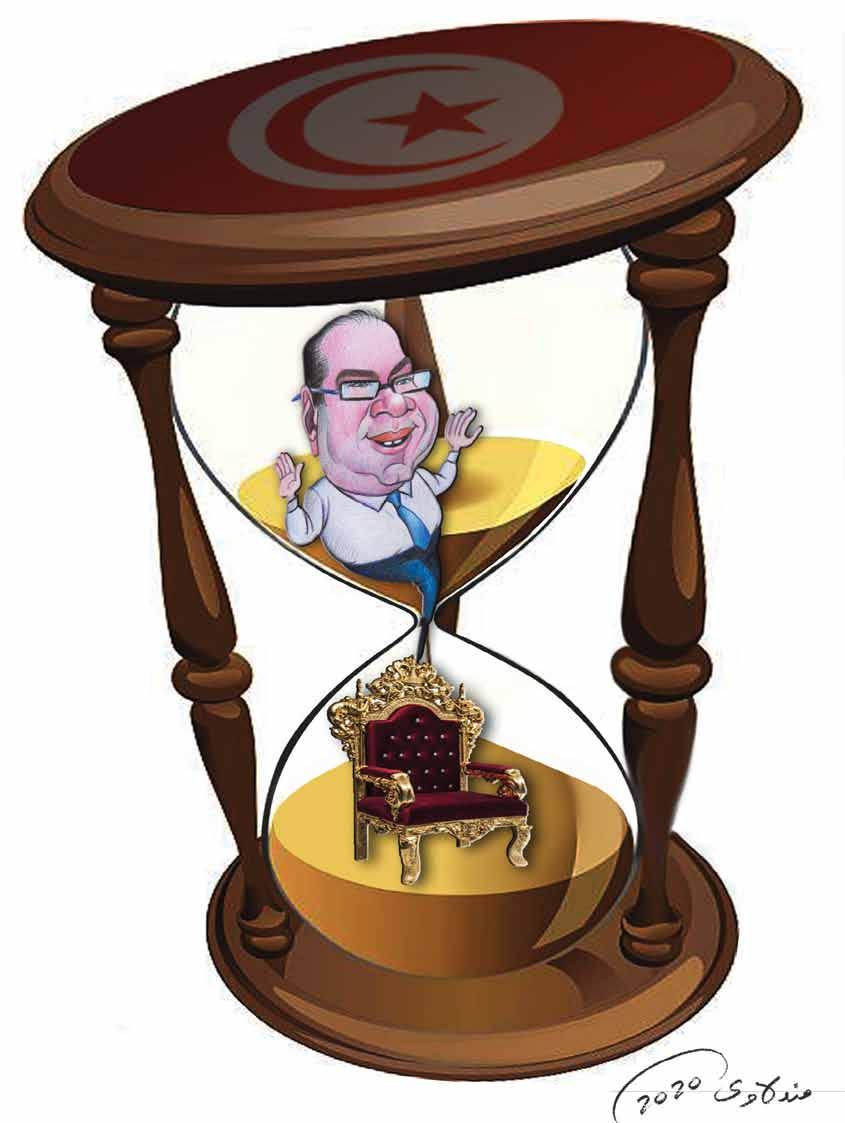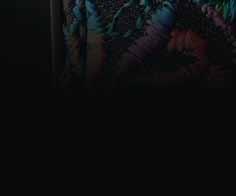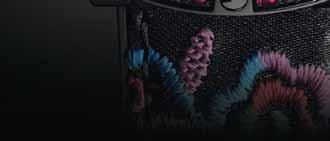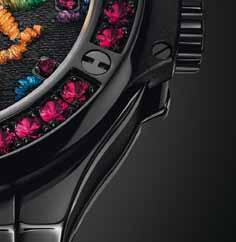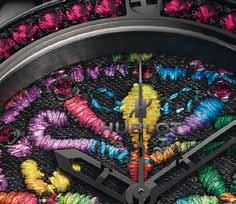
10 minute read
Egyptian Artist Creates Work Inspired by the Ancient Past, with a Story for the Future
A Weekly Political News Magazine
Issue 1789- February- 28/02/2020

rt A
In a Search for Harmony and Balance, Dina Shalaby Explores the Timelessness and Wonder of Ancient Egyptian Aesthetics Egyptian Artist Creates Work Inspired by the Ancient Past, with a Story for the Future
by Yasmine El-Geressi
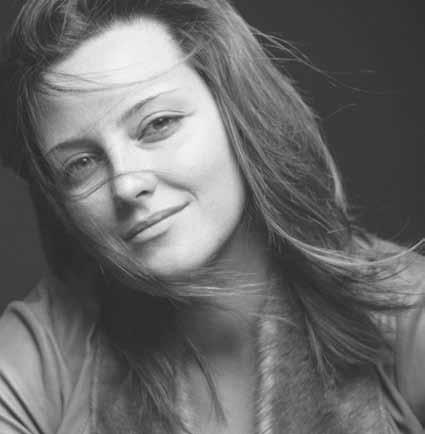
The mysteries of the ancient Egyptians are huge, but the key to understanding the life, culture and belief systems of the ancient civilization under its strong rulers is in front of us—in its exquisite art and architecture. Just as hieroglyphs were a visual language, ancient Egyptian art also followed specific rules in order to be read and understood and it is very hard to dispute the particular allure it has held for artists and designers some 5,000 years later. Egyptomania reached fever pitch during the 20th century: The discovery of the tomb of the boy pharaoh, Tutankhamun, by Howard Carter in November 1922, sparked enormous popular interest. The grandeur and “exoticism” of the pyramids, temples, Sphinx, hieroglyphics, made this great civilization a recurring subject in architecture, film, art and popular culture and generic Egyptian imagery
48 28/02/20 Egyptian artists Dina Shalaby. (Supplied)
Akhenaten The Spiritual Rebel. Inspired by a sunk relief from 1336-1355 BC, Amarna, modern day Minya, 300km south of Cairo; displayed at the Metropolitan museum in New York. (Supplied)
proliferated everywhere.

But while the artwork was stunning to look at, the creative impetus and much of its decorative appeal stems from the concept of ma’at, or balance and harmony, and the importance the ancient Egyptians attached to symmetry. Ma’at, which was thought to comprise the very fabric of creation passed down when the Gods instilled order on a chaotic universe, evolved over the decades and remained the ethical and moral foundation of the Egyptian people.
This timeless and universal concept of the search for harmony and balance is captured in Malakoot, an art project by Russian-Egyptian visual artist Dina Shalaby, who, driven by a renewed appreciation of her national patrimony following an illustrious career in international management consulting that left her searching for a more balanced way to achieve happiness and fulfillment, mixed media and her “deep passion for pharaonic Egypt to create pieces inspired by the past and with a story for the future.” “The call for Malakoot, came to me a few years ago after I had spent more than a decade intensely pursuing success in education, career, travel and intellectual endeavors. I had studied journalism in Egypt, international business in Italy, worked in international management consulting in both countries and eventually in the US. It was a thrilling journey and looking back I wouldn’t change a thing except maybe for the unsustainable rhythm and intensity
rt A
that came with it. The strive and the conditioning of modern life to achieve more, faster, better. To stay on top of your game. To be the center of your universe. To keep running and there, at the end of that race, happiness is waiting, wearing the hat of success and achievement. But at what price? Very likely a burnout,” Shalaby, who held her solo debut exhibition in Cairo and took part in several group exhibitions, told Majalla.
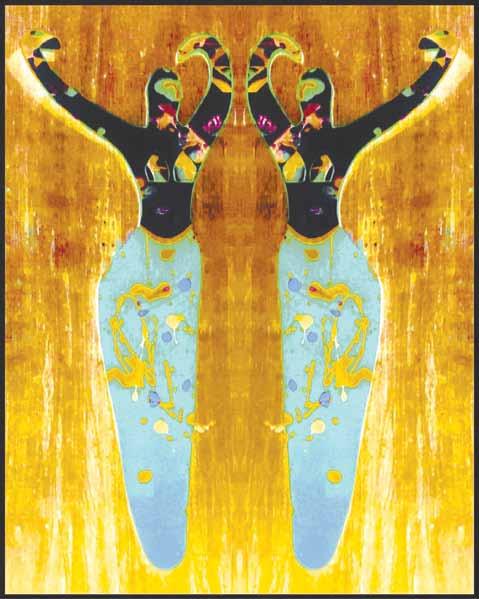
Dina studied journalism in Egypt, international business in Italy, worked in international management consulting in both countries and eventually in the US. But despite the rewards of her success, the rhythm and intensity that came with it were unstainable, she explains.
“The strive and the conditioning of modern life to achieve more, faster, better. To stay on top of your game. To be the center of your universe. To keep running and there, at the end of that race, happiness is waiting, wearing the hat of success and achievement.” Feeling like she could no longer could, nor wanted, to sustain that race, Shalaby felt the need for a deep change. “Something was missing. I quit my job and, oh madness, I had no clear plan of what I would do next. I only knew I needed time and hopefully, a new soul,” she added. Immersing herself in art came as a natural answer, for it had always been her companion. But what surprised Dina was that unexplainable urge to dive back into the art of Ancient Egypt and explore all its complex layers. “Something was telling me that this is where I would find the answer I was looking for. Otherwise how could they have achieved all these puzzling material and spiritual feats and lasted for so long?” she said. With every piece of Ancient Egyptian “I fell in love with their way, the depth of their perception and the elegance of how they expressed it all. How they achieved integrity by harmonising opposites, substituting competition and conflict with complementarity and thus achieving the oneness of practicality and spirituality, the masculine and the feminine, love and wrath, intellect and intuition.”
50 28/02/20 Bird Ladies Bathing In Light. Inspired by a figurine from Naqada II, Qena, Upper Egypt, 3400-3500 BC. Displayed at the Brooklyn Museum in New York. (Supplied)
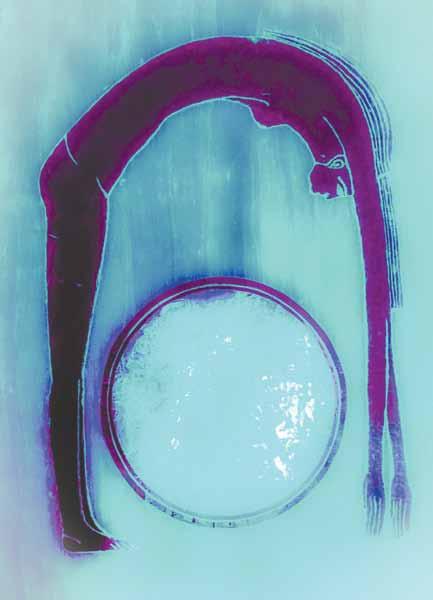
Nut, Goddess Of The Sky. Inspired by a cosmographical map of B.C..330Egypt from )(Supplied
guided their actions: a value system and a life model where balance was Law. Where living in harmony and being in touch with the inner self and the outside world were the measures of happiness, success and a person’s worth,” she said.
art that she put on paper in a new light, Shalaby’s answer became clearer and clearer: “there was a different path to happiness and success and it’s the one Ancient Egyptians walked. And that was a story I wanted to tell.” After mining for the gold nuggets of wisdom contained in Egypt’s past, Shalaby became particularly inspired by the Egyptians’ emotional intelligence and moral philosophy that resulted in a strong ethic in the ordering and harmonisation of one’s life, flavoured with an attitude of benevolence and prevailing sense of balance that is an indispensable basis for higher wisdom. “The ancient Egyptian civilization has achieved what no other could, not even ours. Their architectural genius, for one, is still puzzling. But what was an even bigger achievement is the moral anchoring they developed and that “I fell in love with their way, the depth of their perception and the elegance of how they expressed it all. How they achieved integrity by harmonizing opposites, substituting competition and conflict with complementarity and thus achieving the oneness of practicality and spirituality, the masculine and the feminine, love and wrath, intellect and intuition. How finely they understood the human psyche and addressed the core drivers of a human soul: the need for love and protection, the healing power of gratitude, the creative power of mind and intention. So many moving pieces, always in perfect harmony, singing the same song. Thousands of years have passed but everything about their philosophy feels as relevant as ever, so universal and timeless.” “I have my answer now and a new soul. All the moving pieces of my story are in harmony now and sing the same song in my heart. I try to convey that through my art and celebrate the minds and hearts that led me to it. May we all find our answers!”
Po rt
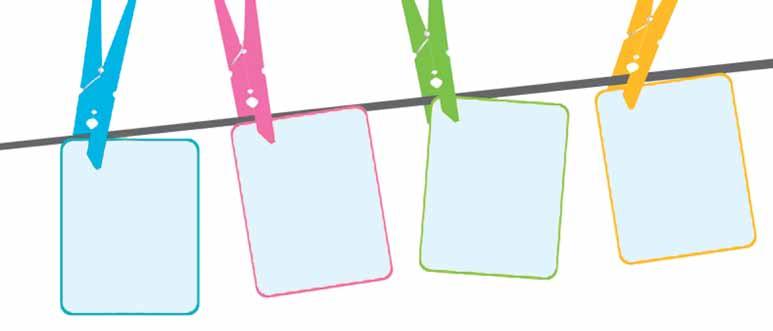
ra it
by Majalla-London -1 Early Life and Education Elyes Fakhfakh was born in the Tunisian capital of Tunis in 1972. He would then attend the National Engineering School of Sfax where he earned his bachelor’s degree in engineering in 1995. He would continue his education at the Institut National des Sciences Appliquées de Lyon in France where he earned a masters in engineering. Being the studious young man that he is, he also earned a master’s in business administration from the University of Évry Val d›Essonne. -2 Life and Work Abroad Fakhfakh would go on to work as a project manager for Hutchinson SA, a French company that manufactures rubber and is a subsidiary of Total SA. Under his management, 45 of the company’s factories around the world managed to cut production costs. Afterward he became the project manager of the company’s branch in Poland. Fakhfakh went back to Tunisia in 2006 to work as the general manager of a company that specializes in car components. When the company was bought by a Spanish corporation, he became the general manager for Caveo Automotive Group, and he stayed at that position until 2011. -4 Entrance into Politics The political landscape in Tunisia, as political participation increased and people could form political factions and parties for the first time. Fakhfakh went on to join the social democratic party Ettakatol. Under the Islamist Jebali government he was appointed Minister of Tourism. In December 2012, he was given another role this time he became the Minister of Finance, so for a while he was in charge of two ministries. In March 2013, Fakhfakh’s only post became that of Minister of Finance, and that was under the government of the Islamist Ali Larayedh. His ministerial career ended in January ,29 2014, however that wasn’t the end of his political career.
the 2019 presidential race, running as the nominee from Ettakatol. He went out in the first round having earned only 11,532 votes, or 0.34 percent of the total votes cast.
-6 Chosen to Alleviate a Political Stalemate The 2019 parliamentary election posed a dilemma in Tunisia’s political sphere. While Muslim Brotherhood affiliated Ennahda Movement earned the most votes, it don’t not have a majority that would enable them to form a functioning government. In accordance to the Tunisian constitution, it up to the president to choose the Prime Minister. In turn, the Prime Minister designate is to form a government which the parliament approves. As such, the newly elected Tunisian president, Kais Saied, chose Elyes Fakhfakh as the new head of government. However, he soon might face an early challenge since the Ennahda announced that its members would not vote in favor of Fakhfakh’s government. As a result, his tenure might be a short lived one and Saied might be forced to dissolve parliament and hold early parliamentary elections.
